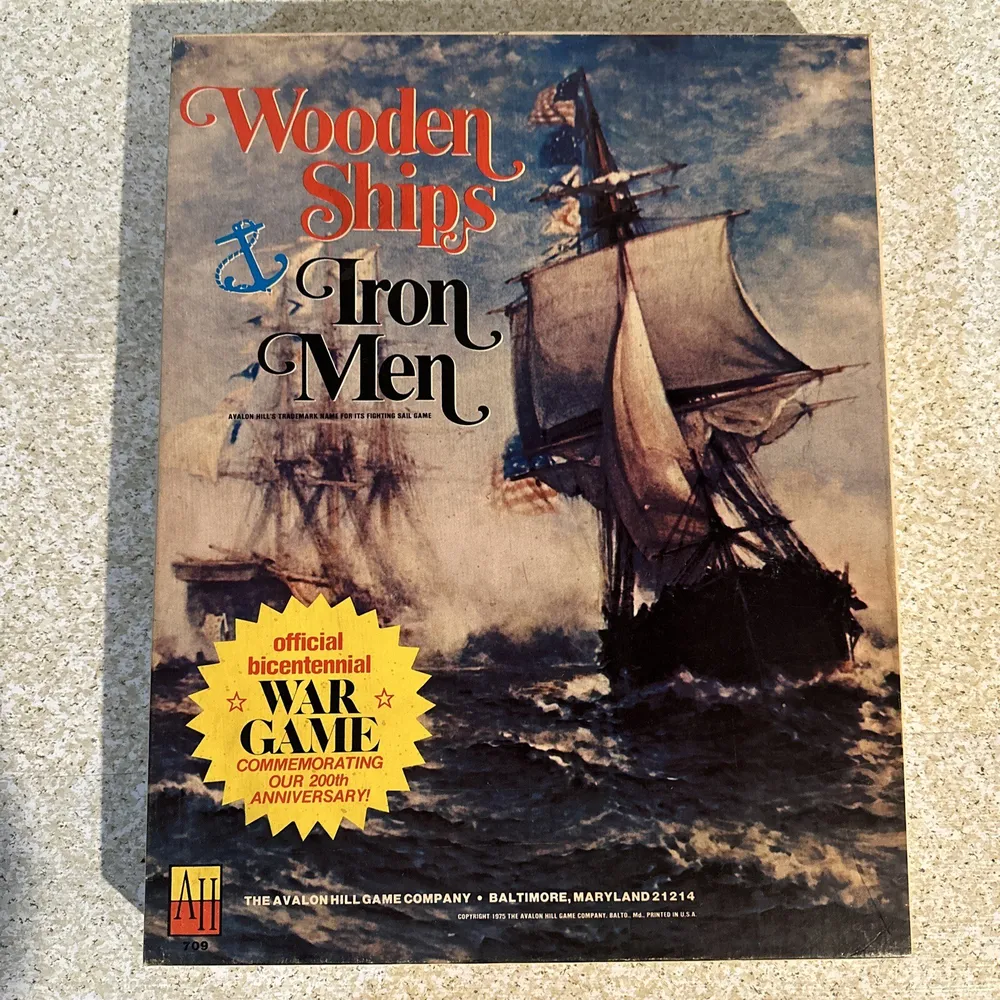Wooden Ships & Iron Men (1974)
Wooden Ships and Iron Men is a naval board wargame that simulates naval combat during the Age of Sail, published by Battleline Publications in 1974. The game was later revised and published by Avalon Hill in 1975, which included 23 scenarios based on historical events such as the Battles of The Saintes, the Nile, and Trafalgar. The game has gained popularity and significance due to its detailed representation of military engagements in the golden age of sail.
Game Components of Wooden Ships & Iron Men
How To Setup Wooden Ships & Iron Men
Setting up the game involves arranging the hex grid board, distributing the counters according to the chosen scenario, and preparing the log sheets and reference materials. The game includes 23 scenarios in the Avalon Hill edition, such as the Battles of The Saintes, the Nile, and Trafalgar. Players need to select a scenario, place the ships on the board according to the scenario’s setup, and distribute the necessary log sheets and counters.
Gameplay Mechanics and Game Objective
Player Experience
Playing **Wooden Ships & Iron Men** offers a deep and realistic naval combat experience. The game is praised for its balance of historicity and playability, making it accessible to newcomers while providing depth for experienced players. The elegant simplicity of the firing system and the importance of wind direction in sailing ships add to the game’s realism and engagement.
Pros
Cons
Personal Thoughts on Wooden Ships & Iron Men
**Wooden Ships & Iron Men** is ideal for those who enjoy historical wargames and are looking for a game that balances simplicity with deep tactical complexity. It is particularly suited for fans of naval history and those who appreciate the intricacies of Age of Sail combat. While it may not be the best fit for casual gamers due to its complexity, it remains a classic and highly regarded game in the wargaming community.
We are supported by our audience. When you purchase through links on our site, we may earn an affiliate commission, at no extra cost for you. Learn more.

